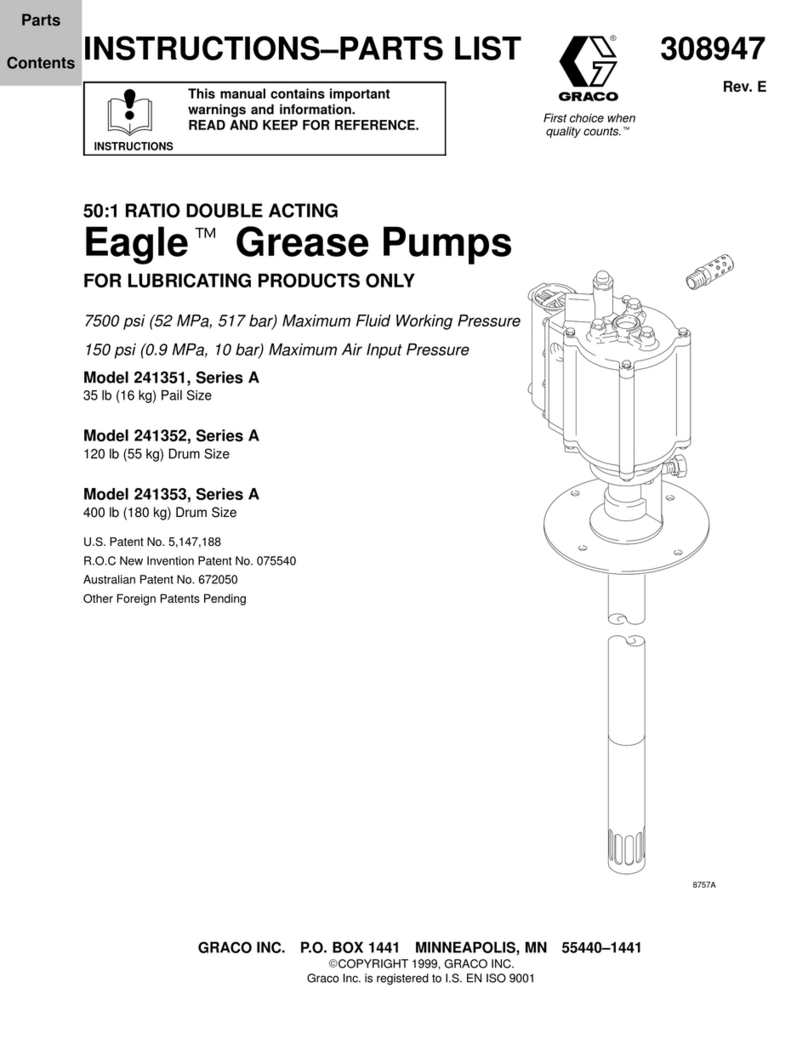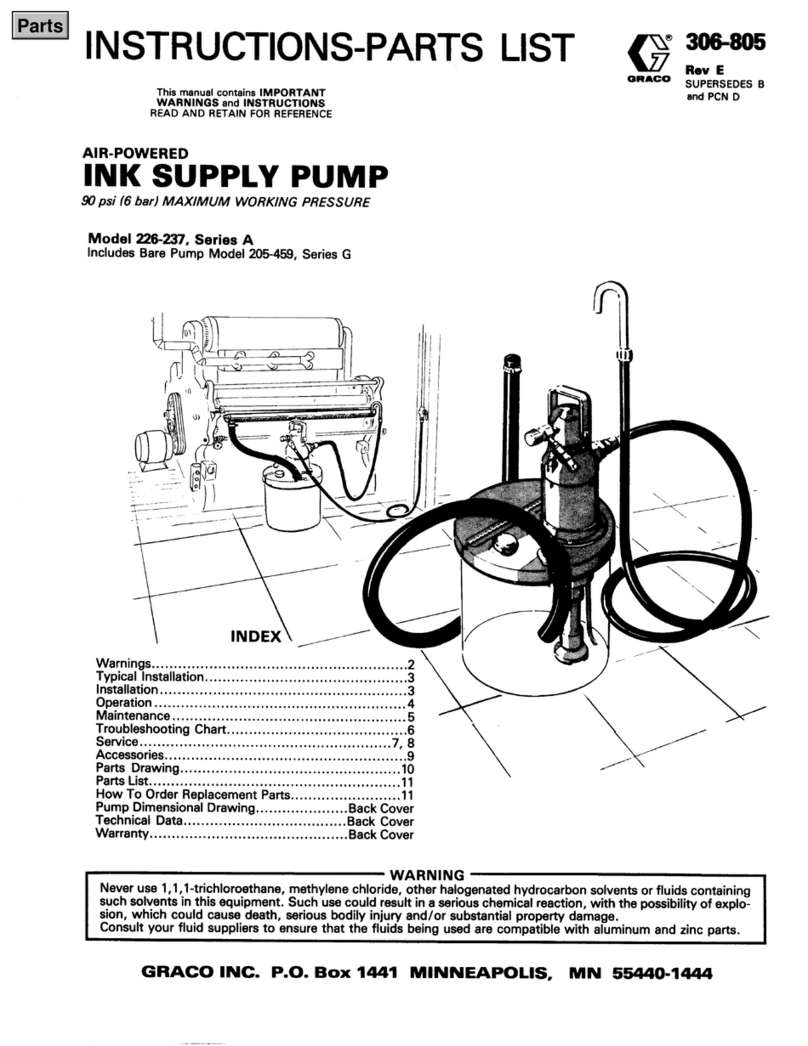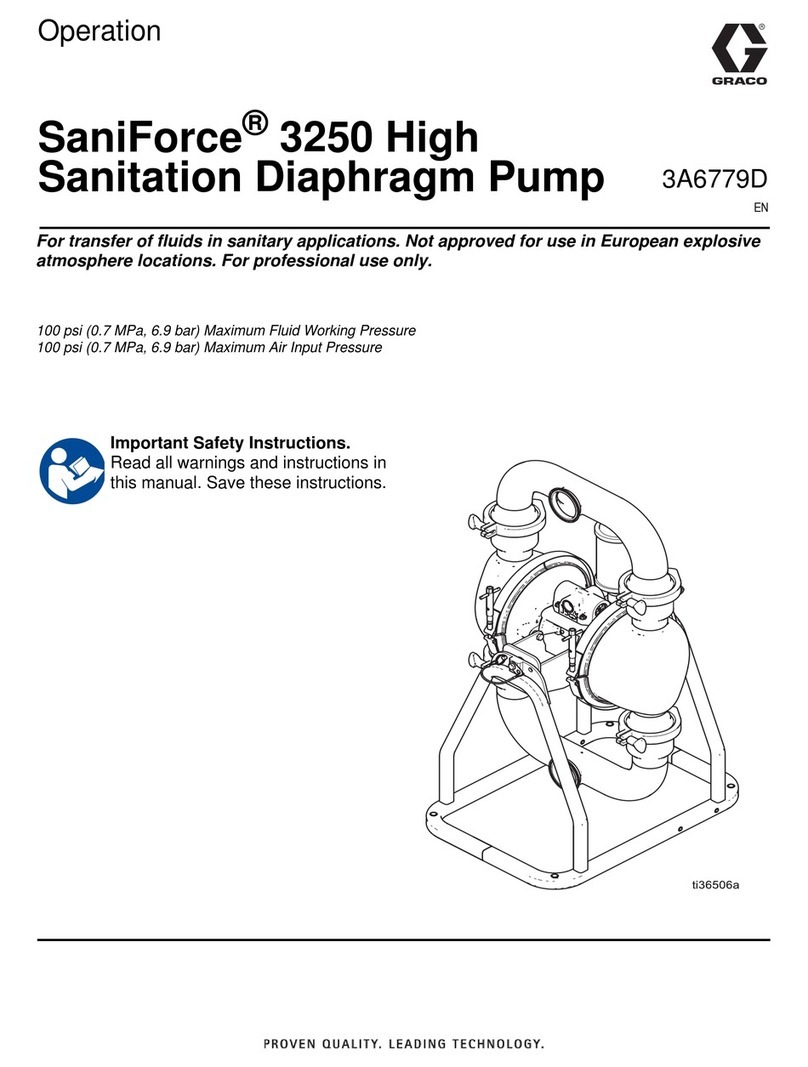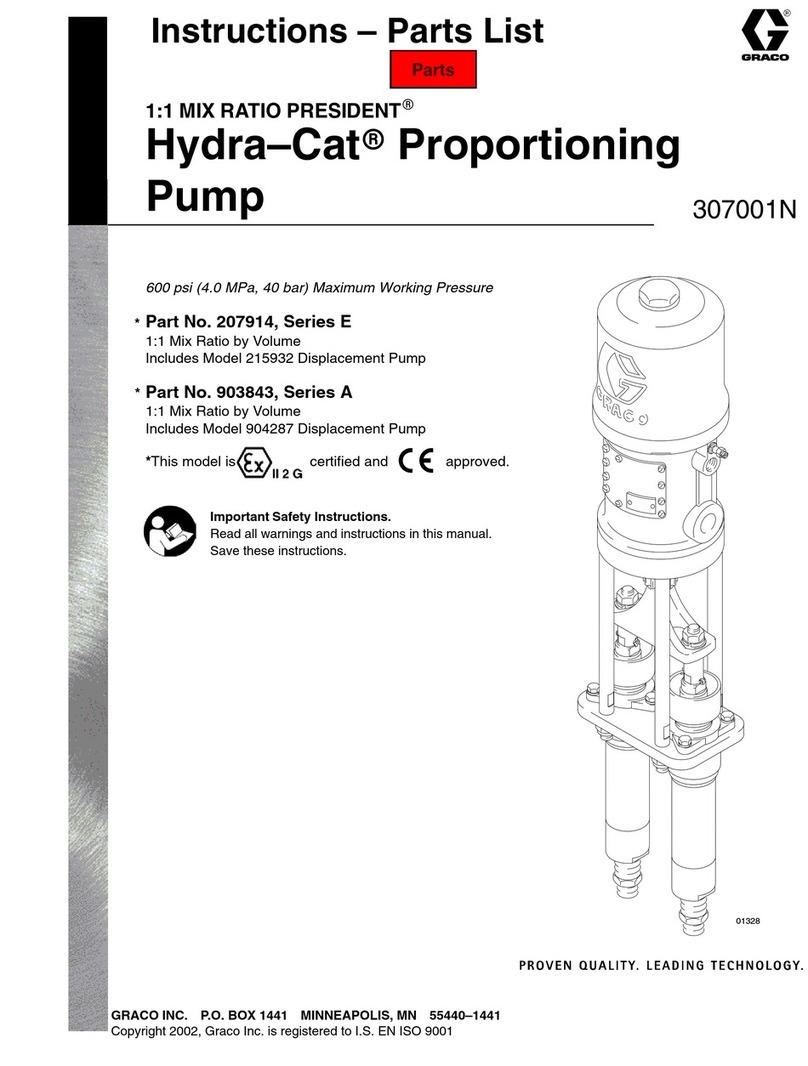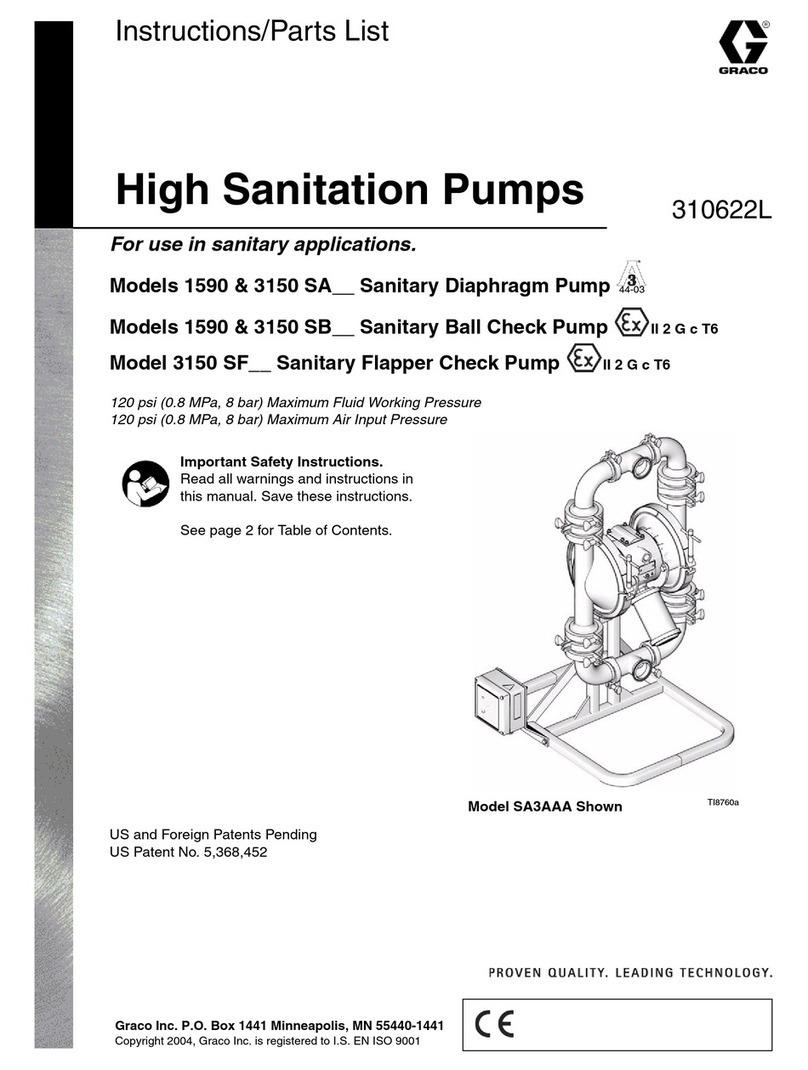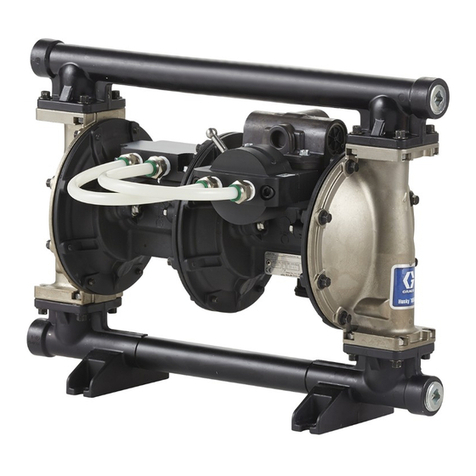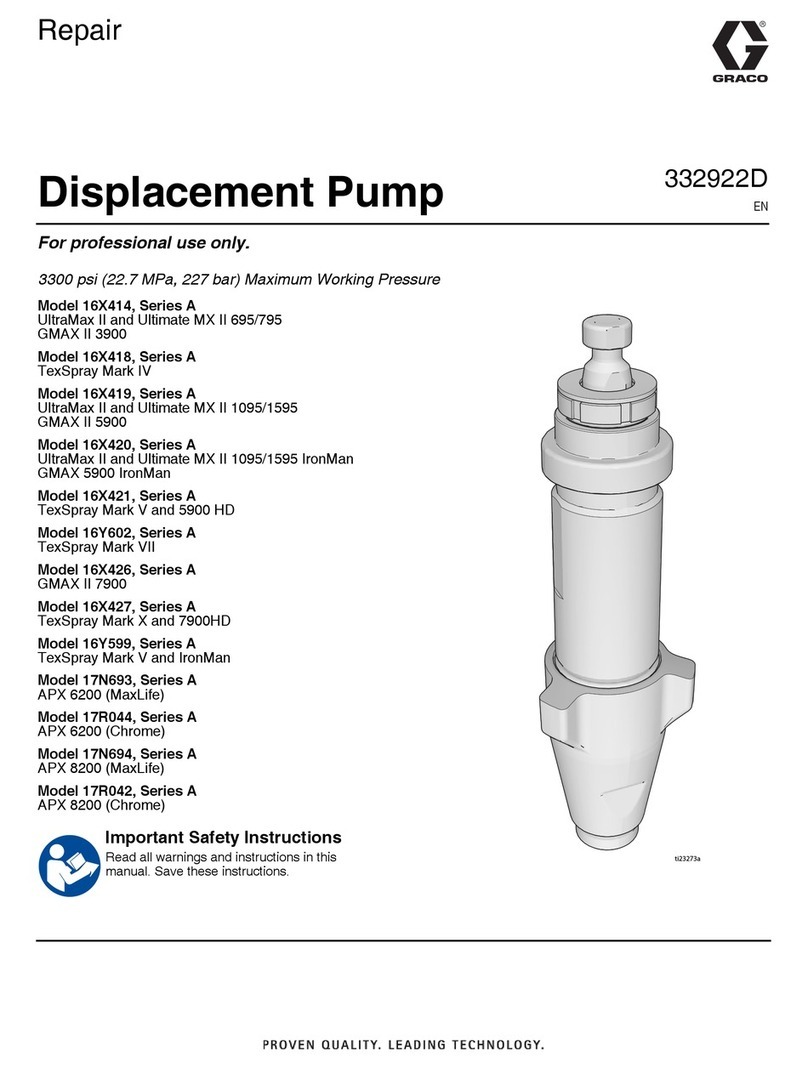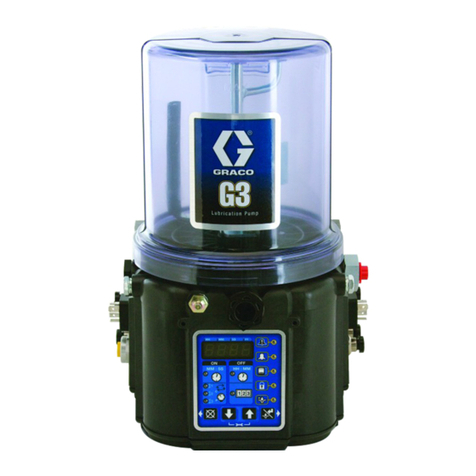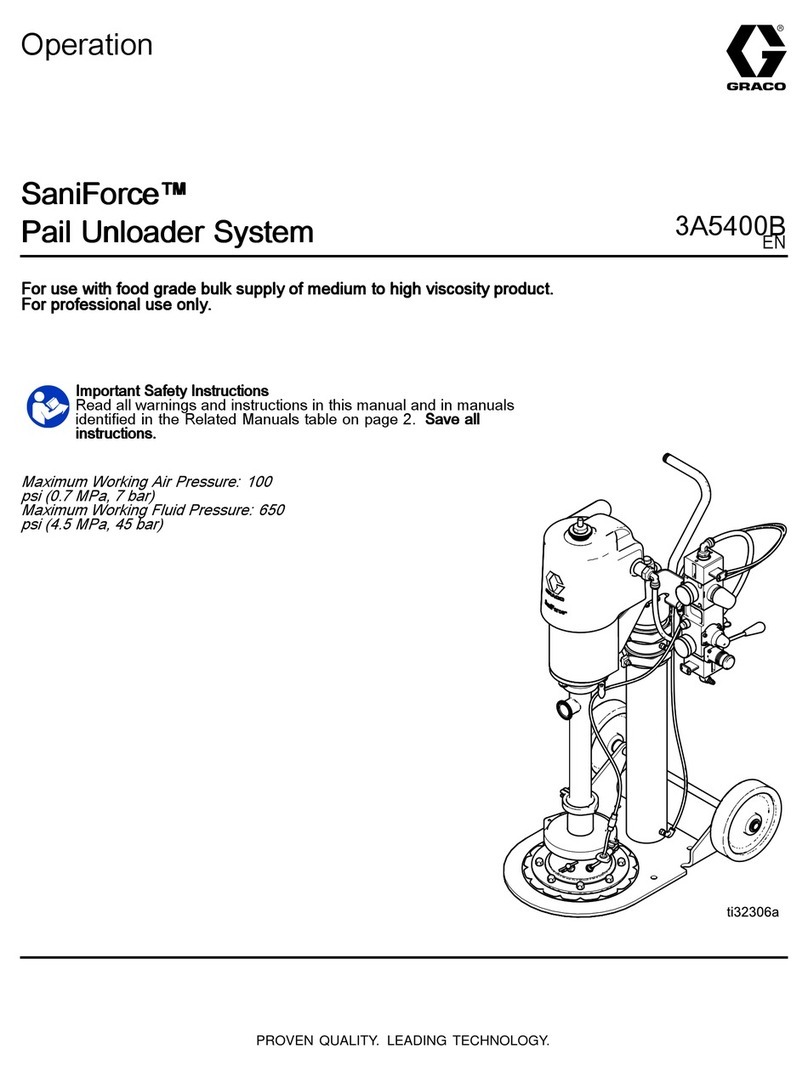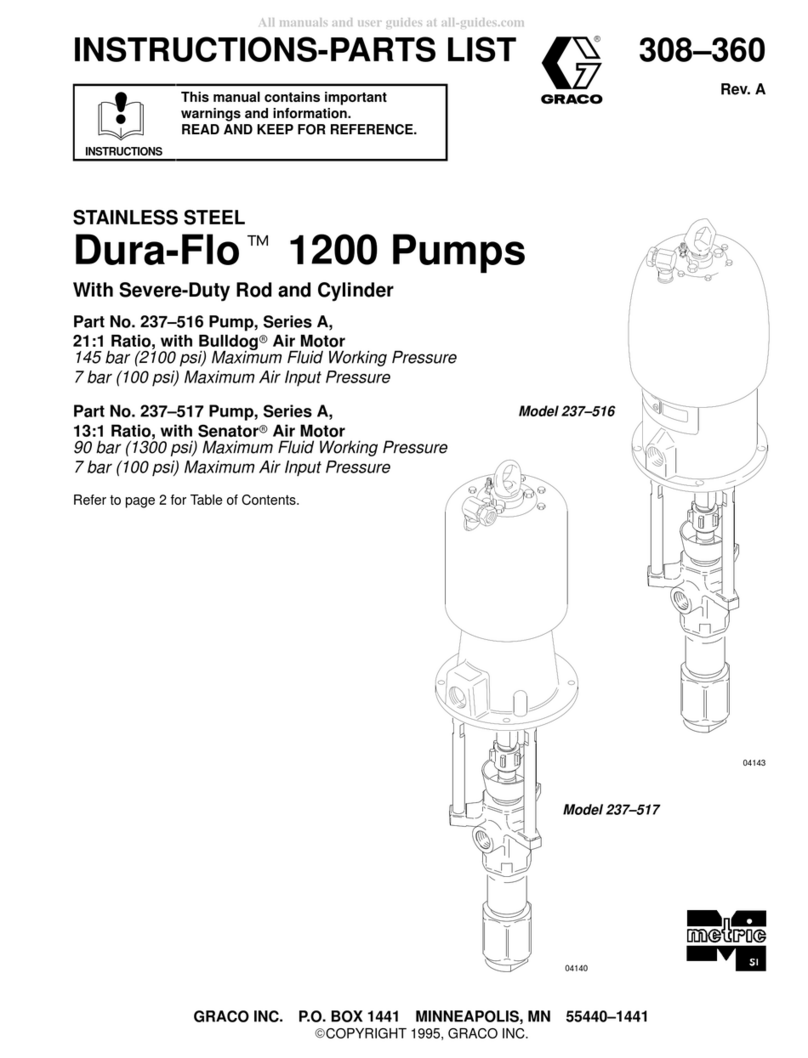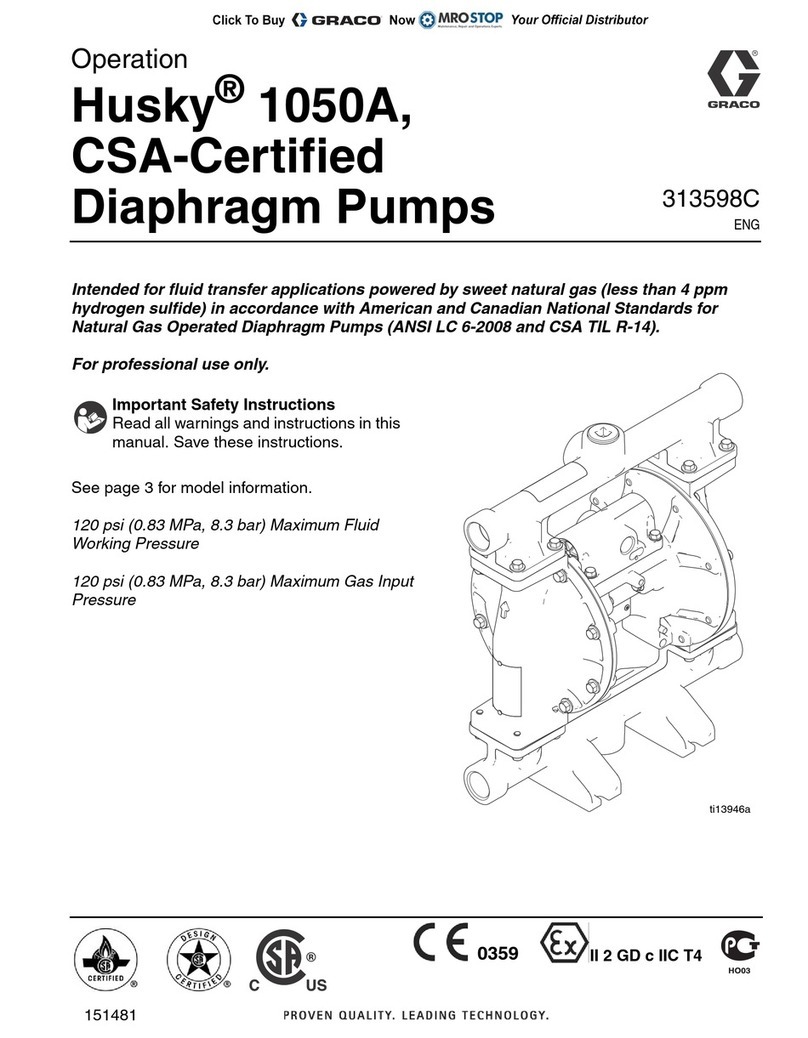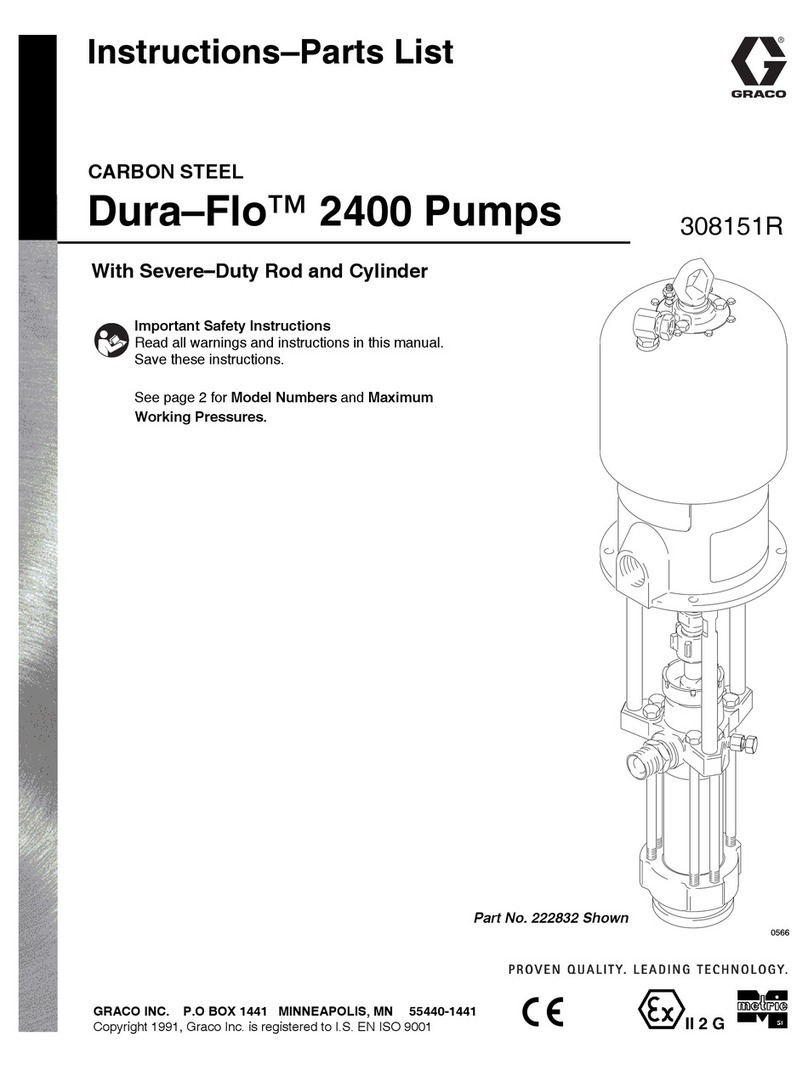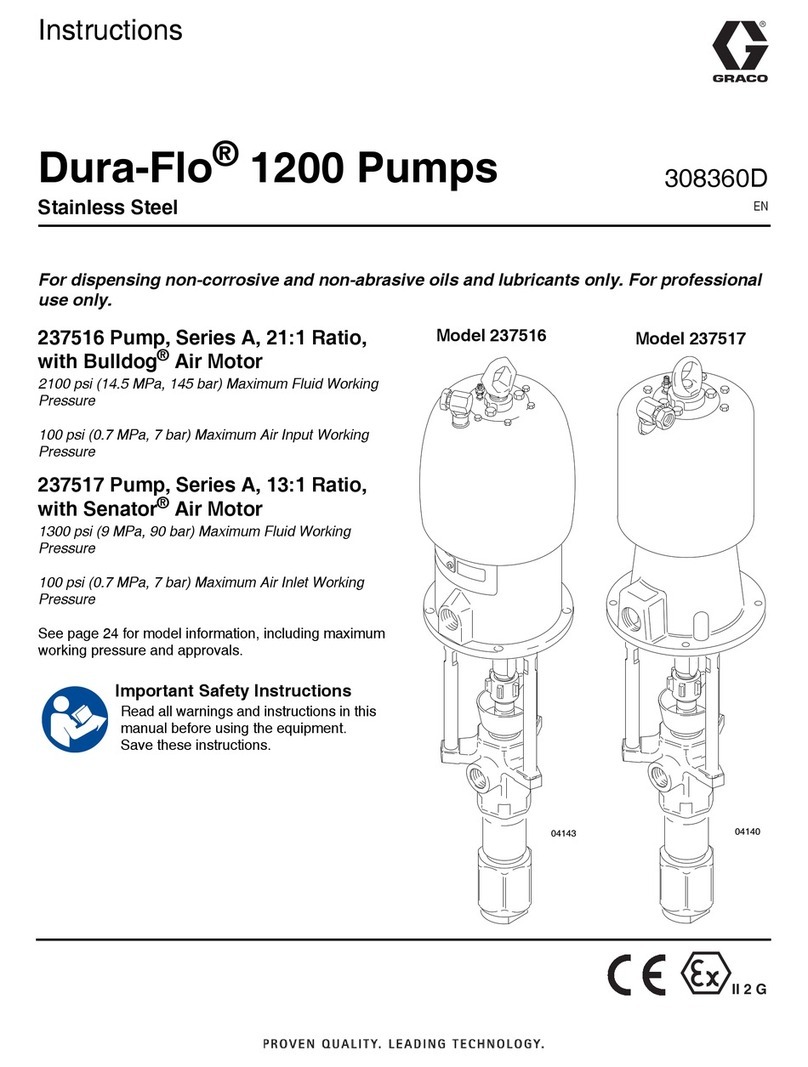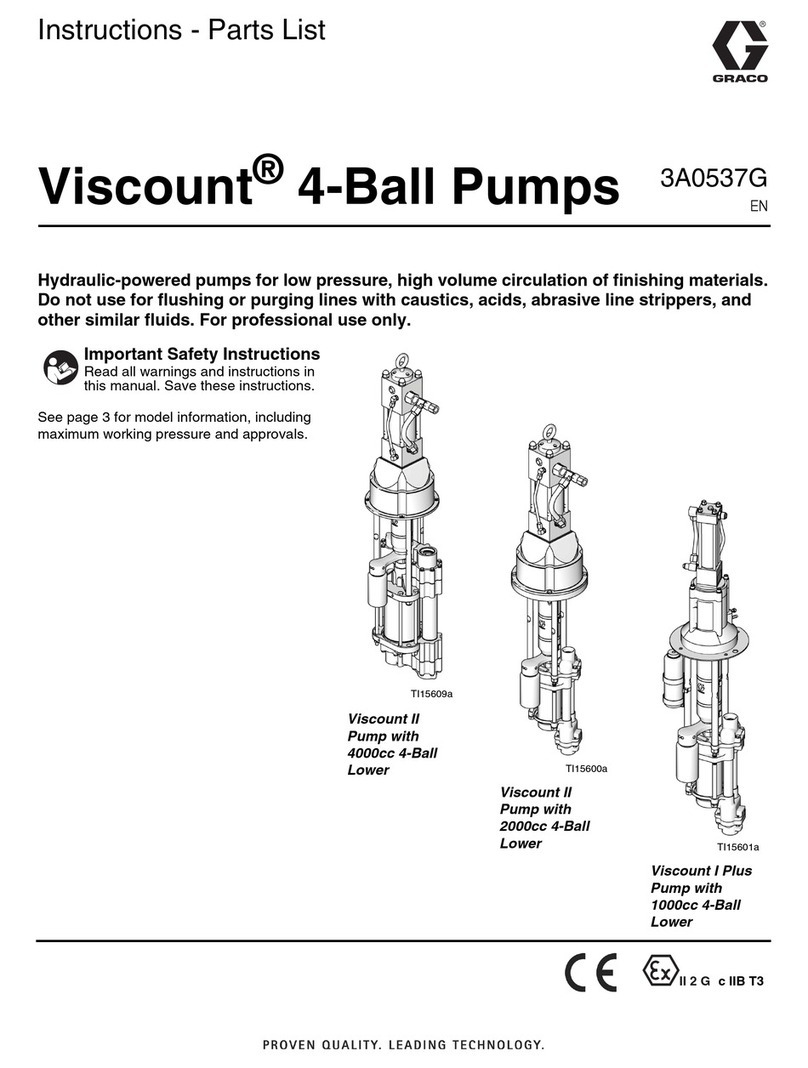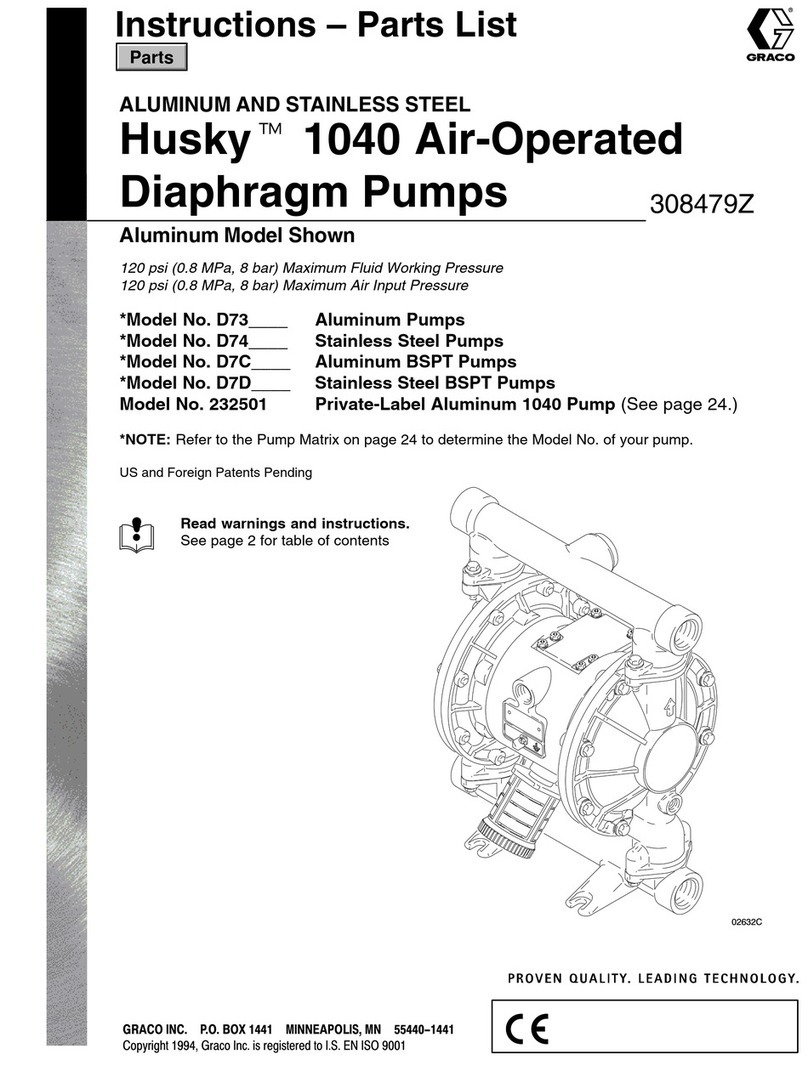
8308756
Installation
Supplied Components
Refer to Fig. 1.
WARNING
A red-handled bleed-type master air valve (E) and
a fluid drain valve (F) are supplied. These compo-
nents help reduce the risk of serious injury, includ-
ing fluid injection and splashing of fluid in the eyes
or on the skin, and injury from moving parts if you
are adjusting or repairing the pump.
The bleed-type master air valve relieves air trapped
between this valve and the pump after the valve is
closed. Trapped air can cause the pump to cycle
unexpectedly. Locate the valve close to the pump.
The fluid drain valve assists in relieving fluid pres-
sure in the displacement pump, hose, and gun.
Triggering the gun to relieve pressure may not be
sufficient.
DThe red-handled bleed-type master air valve (E)
is required in your system to relieve air trapped
between it and the air motor when the valve is
closed (see the WARNING above). Do not block
access to the valve.
DThe pump air regulator (G) controls pump speed
and outlet pressure by adjusting the air pressure to
the pump.
DThe air relief valve (H) opens automatically to
prevent overpressurization of the pump.
DThe air inlet swivel (K) connects incoming air to
the pump.
DThe suction hose (30) and tube (33) allow the
pump to draw fluid from a 55 gallon (200 liter) drum
(L). Carbon steel models include a bung adapter
(34) which screws into the drum’s bung hole.
DThe fluid filter (15) includes a 60 mesh (250
micron) stainless steel element to filter particles
from the fluid as it leaves the pump. It also includes
the fluid drain valve (F), which is required in your
system to relieve fluid pressure in the hose and gun
(see the WARNING above).
DThe airless spray gun (106) dispenses the fluid.
The gun houses the spray tip (107), which is
available in a wide range of sizes for different spray
patterns and rates of flow.
DThe fluid hose (101) and whip hose (103) supply
fluid to the gun.
DThe gun swivel (104) allows greater gun maneu-
verability. On Monark models using a fine finish
spray tip, the swivel includes an in-line filter.
Installing the Pump
NOTE: Refer to Fig. 1 and to the Dimension drawing
on page 22 and the Mounting Hole Layout on page 23.
1. Ensure that the wall is strong enough to support
the weight of the pump and accessories, fluid,
hoses, and stress caused during pump operation.
2. Position the bracket mounting plate (39) on the
wall so the edge with the hook is facing up. Refer
to page 23. Mount the plate so the top edge is 4 to
5 ft (1.2 to 1.5 m) above the floor. Check that the
plate is level. Mark two holes on the wall, using the
plate as a template. Drill two holes and attach the
plate with 1/2 in. bolts and washers.
3. Using two people, lift the pump assembly into
position and hang the pump bracket (1) on the
bracket mounting plate (39). Have one person hold
the assembly in place while the other checks that
the pump bracket (1) is level. Mark four holes on
the wall, using the pump bracket as a template. Lift
the bracket off the mounting plate (39).
4. Drill four holes in the wall.
WARNING
The pump bracket (1) must be bolted to the wall
with four bolts. Do not simply hang the pump
bracket on the bracket mounting plate (39).
5. Lift the pump assembly back into position, hang it
on the bracket mounting plate (39), and bolt the
pump bracket (1) to the wall. Use 1/2 in. bolts and
washers to mount the pump module to the wall.
Use bolts that are long enough to keep the pump
bracket (1) from vibrating during operation.


